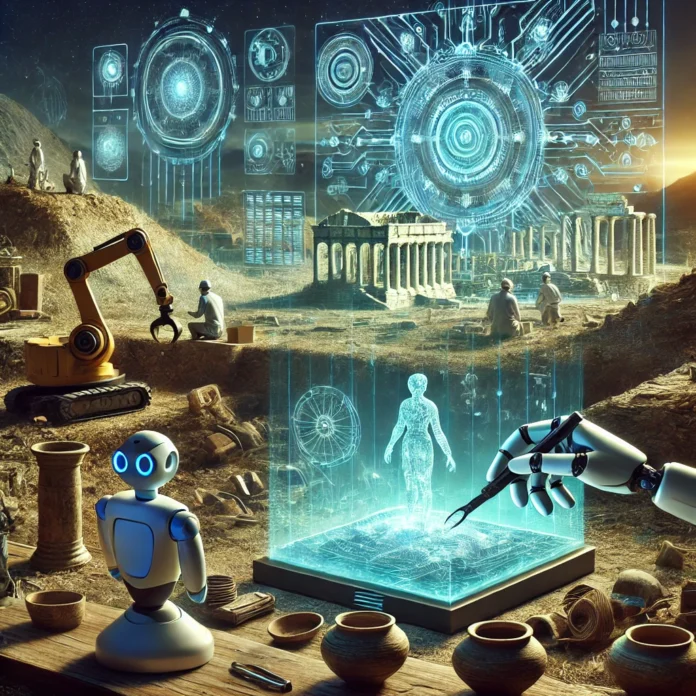Archaeology, the study of human history through material remains, has traditionally relied on meticulous manual work, from excavating sites to analyzing artifacts. However, Artificial Intelligence (AI) is revolutionizing this field, offering new tools to uncover, interpret, and preserve the past. By automating data analysis, predicting site locations, and simulating ancient environments, AI is helping archaeologists reconstruct ancient civilizations with unprecedented accuracy and efficiency.
AI in Site Discovery
One of the most challenging aspects of archaeology is locating sites of historical significance. Traditional methods involve time-consuming surveys and often rely on luck. AI is changing this by analyzing satellite imagery and geographic data to predict potential archaeological sites.
- Predictive Models: AI algorithms analyze patterns in terrain, vegetation, and historical records to identify locations where ancient civilizations may have existed. For example, researchers have used AI to locate long-lost Maya cities hidden beneath dense jungles.
- Remote Sensing: Tools like Google Earth Engine and SAR (Synthetic Aperture Radar) use AI to process satellite data, revealing buried structures, roads, and agricultural fields invisible to the naked eye.
These advancements not only save time and resources but also reduce the need for invasive techniques that could damage sites.
Artifact Analysis and Preservation
AI excels in analyzing and categorizing artifacts, which is a labor-intensive task for archaeologists.
- Image Recognition: Machine learning models can identify and classify artifacts from photographs, recognizing patterns in pottery, inscriptions, and tools. For example, AI systems have been used to analyze fragments of ancient Greek pottery, reconstructing designs and identifying their cultural origins.
- Translation of Ancient Texts: AI tools like DeepMind’s Ithaca assist in deciphering ancient scripts and incomplete texts by predicting missing words and providing context based on linguistic patterns. This technology has been instrumental in translating damaged inscriptions.
Virtual Reconstruction of Ancient Sites
AI enables the creation of virtual reconstructions, allowing researchers and the public to explore ancient civilizations in immersive ways.
- 3D Modeling: AI processes data from lidar scans and historical records to recreate ancient cities and structures. Tools like Cultural Heritage Imaging generate detailed models of ruins, helping archaeologists visualize how they might have looked in their prime.
- Simulating Daily Life: By integrating AI-generated models with historical knowledge, researchers can simulate ancient lifestyles, from trade routes to architectural layouts, offering insights into societal organization.
AI’s Role in Protecting Heritage Sites
AI plays a crucial role in safeguarding cultural heritage from threats like looting and climate change. Algorithms monitor changes in satellite images to detect illegal activities, while predictive models assess the vulnerability of sites to environmental factors, enabling preemptive preservation efforts.
Challenges and Ethical Considerations
Despite its potential, AI in archaeology raises ethical concerns. Algorithms depend on existing data, which might not represent the full diversity of past cultures. There’s also the risk of prioritizing technological approaches over traditional methods that emphasize human interpretation and cultural sensitivity.
Conclusion
AI is transforming archaeology, offering innovative ways to uncover and preserve humanity’s history. From locating hidden sites to reconstructing ancient worlds, these technologies empower archaeologists to solve mysteries once thought unsolvable. By combining AI with traditional expertise, we can gain a deeper understanding of our shared past while ensuring it is preserved for future generations.





